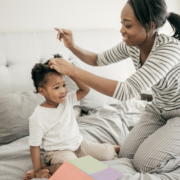Can I Catch Head Lice More Than Once?
Dealing with head lice can be an unpleasant experience, and once you’ve managed to get rid of them, the last thing you want is to face another infestation. This leads many to wonder: can you catch head lice more than once? The simple answer is yes. Here’s why and what you can do about it.
Understanding Head Lice
Head lice are tiny, wingless insects that live on the human scalp and feed on blood. They spread primarily through direct head-to-head contact and, less commonly, through sharing personal items like hats, combs, or pillows. Contrary to common misconceptions, head lice infestations are not a reflection of poor hygiene; anyone can get them.
Why You Can Catch Head Lice Multiple Times
- No Immunity: Unlike many infectious diseases, which the body can develop immunity against, head lice do not provoke an immune response that would prevent future infestations. Each encounter with head lice is a new, separate event.
- Re-Exposure: If you are exposed to someone who has head lice, you can easily catch them again. This is especially common in environments where people are in close contact, such as schools, camps, and daycare centers.
- Survival Tactics: Head lice are resilient creatures. They can survive off the human scalp for up to 48 hours, meaning that lice can be lurking on furniture, clothing, or bedding, ready to infest someone new.
- Incomplete Treatment: Sometimes, treatments do not completely eradicate all lice and nits (eggs). If even a few lice survive, they can quickly reproduce, leading to a new infestation.
How to Prevent Re-Infestation
While you can’t develop immunity to head lice, you can take steps to reduce the risk of catching them again:
- Regular Checks: Perform regular head checks, especially during known outbreaks. Early detection is crucial for effective treatment.
- Avoid Sharing Personal Items: Educate your family about the importance of not sharing items that come into contact with hair, such as hats, combs, and hair accessories.
- Prompt Treatment: If you discover lice, treat the infestation immediately using over-the-counter or prescription treatments. Follow the instructions carefully to ensure all lice and nits are killed.
- Environmental Cleaning: Wash clothing, bedding, and personal items in hot water and dry them on high heat. Vacuum carpets, furniture, and car seats to remove any stray lice or nits.
- Notify Close Contacts: Inform schools, daycare centers, or close contacts if you or your child has head lice. This allows others to check for lice and take preventive measures, reducing the overall risk of re-infestation.
Professional Head Lice Removal Centers
If you find yourself battling head lice, it might be time to consider a professional head lice removal center. These centers specialize in treating lice infestations quickly and effectively, often guaranteeing that you’ll be lice-free in less than an hour. Here are some benefits of using a professional service:
- Expert Care: Professionals are trained to detect and remove lice and nits thoroughly. They use specialized tools and techniques that are more effective than over-the-counter products.
- Guaranteed Results: Many professional head lice removal centers offer guarantees, ensuring that you are lice-free after just one treatment. This can provide peace of mind and save you from repeated treatments and frustration.
- Safe and Non-Toxic Methods: Professional centers often use non-toxic, safe methods to remove lice, which can be especially important for children and individuals with sensitive skin.
- Time-Saving: Instead of spending hours combing through hair at home, you can have the problem resolved quickly and efficiently, often in less than an hour.
Conclusion
Yes, you can catch head lice more than once. Understanding that there is no immunity to head lice is essential in staying vigilant and taking preventive measures. Regular checks, prompt treatment, and thorough cleaning are your best defenses against these persistent pests. If you find yourself struggling with re-infestation, consider visiting a professional head lice removal center to ensure you are lice-free quickly and effectively. By staying informed and proactive, you can reduce the risk of re-infestation and keep your family lice-free.


















